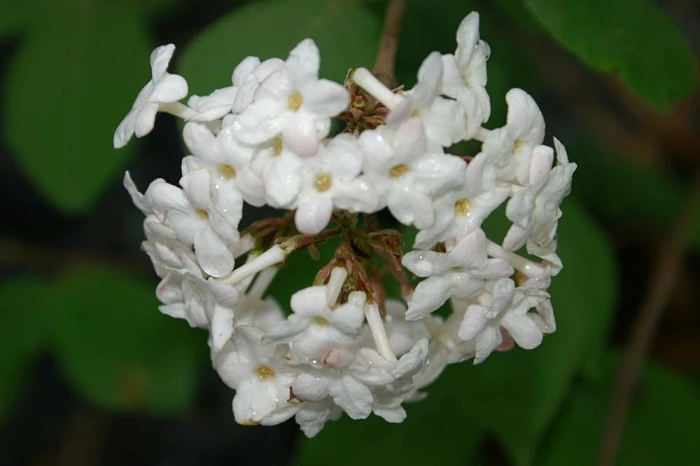Judd Viburnum
(Viburnum ×juddii)
Judd Viburnum (Viburnum ×juddii)
/
/

Photo by David J. Stang
CC BY-SA 4.0
Image By:
Photo by David J. Stang
Recorded By:
Copyright:
CC BY-SA 4.0
Copyright Notice:
Photo by: Photo by David J. Stang | License Type: CC BY-SA 4.0 | License URL: https://creativecommons.org/licenses/by-sa/4.0 | Uploader: David Stang | Publisher: Wikimedia Commons | Title: Viburnum_x_juddii_1zz.jpg | Notes: Uploaded own work with UploadWizard |













Estimated Native Range
Climate Requirements for Passaic, New Jersey
| This Plant | Your Site | Plant Suitability for Your Location | ||
|---|---|---|---|---|
| • Precipitation | 35" - 48" | 49" | Aquatic | Aquatic |
| • High Temp. | 81°F - 90°F | 87°F | Your summer temperatures are normal for this plant. | Excellent |
| • Low Temp. | 14°F - 23°F | 22°F | Your winter temperatures are normal for this plant | Excellent |
This plant may not grow well at your location - your precipitation is too high.
Summary
Viburnum ×juddii, commonly known as Judd Viburnum, is a deciduous hybrid shrub of garden origin, likely involving Viburnum carlesii as one of the parents. It exhibits a moderate growth rate, reaching a height of 6-8 feet (1.8-2.4 meters) and a width of 6-10 feet (1.8-3 meters). Judd Viburnum is characterized by its rounded form and dense branching, which create a full, bushy appearance. The plant is renowned for its fragrant white flowers that bloom in mid to late spring, arranged in spherical clusters that are highly ornamental. Following the flowering period, non-showy, berry-like drupes may appear, which can attract birds.
Judd Viburnum is valued for its fragrant, showy flowers and its use as a specimen or foundation plant in residential landscapes. It is also suitable for mixed shrub borders and as a deciduous hedge. This shrub is relatively low-maintenance, requiring medium amounts of water and thriving in a variety of soil types, including clay, loam, and sandy soils, provided they have medium drainage. It prefers full sun to part shade, with some protection from the hottest afternoon sun in warmer climates. While generally disease-resistant, it can occasionally suffer from viburnum leaf beetle infestations or fungal diseases such as leaf spot.CC BY-SA 4.0
Judd Viburnum is valued for its fragrant, showy flowers and its use as a specimen or foundation plant in residential landscapes. It is also suitable for mixed shrub borders and as a deciduous hedge. This shrub is relatively low-maintenance, requiring medium amounts of water and thriving in a variety of soil types, including clay, loam, and sandy soils, provided they have medium drainage. It prefers full sun to part shade, with some protection from the hottest afternoon sun in warmer climates. While generally disease-resistant, it can occasionally suffer from viburnum leaf beetle infestations or fungal diseases such as leaf spot.CC BY-SA 4.0
Plant Description
- Plant Type: Shrub
- Height: 6-8 feet
- Width: 6-10 feet
- Growth Rate: Moderate
- Flower Color: White
- Flowering Season: Spring
- Leaf Retention: Deciduous
Growth Requirements
- Sun: Full Sun, Part Shade
- Water: Medium
- Drainage: Medium
Common Uses
Bird Garden, Fragrant, Hedges, Low Maintenance, Showy Flowers, Street Planting
Natural Habitat
Deciduous hybrid shrub of garden origin with fragrant white spring flowers, suitable for residential landscapes and mixed borders, prefers full sun to part shade, and medium-draining soils
Other Names
Common Names: Hybrid Viburnum
Scientific Names: Viburnum ×juddii
GBIF Accepted Name: Viburnum ×juddii